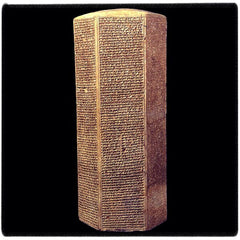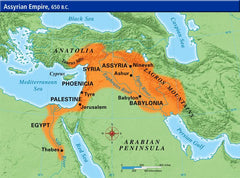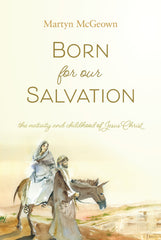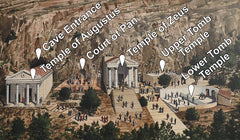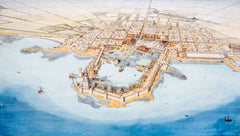Your cart is empty now.

A "captivating account of the history of Christ’s birth"
Born for our Salvation: The Nativity and Childhood of Jesus Christ, Martyn McGeown, Reformed Free Publishing Association, 2019. 288 pages, hardcover, $26.95. [Reviewed by Rev. Joseph Holstege, pastor of Zion Protestant Reformed Church in Jenison, MI]
The greatest miracle ever to take place was not the standing still of the sun over Joshua’s battle or water coming from the rock by the striking of Moses’ rod. The greatest miracle ever to take place was the incarnation of Almighty God, which took place when Jesus Christ was born many years ago of the virgin Mary. The magnitude of this miracle follows from its stunning implications: that the God who created the world around us, who formed each of us in the darkness of our mothers’ womb, who cannot be contained in temples made with human hands, assumed the form of a servant, took upon himself our human nature, was wrapped in swaddling clothes and laid to sleep in a manger! The preciousness of this miracle to every believer is found in God’s purpose in performing it. Jesus Christ, the Son of God incarnate, was not born to gratify our sentimentality during the holiday season. He was not born as the poster child for world peace to be displayed in nativity scenes across the nations. He was born for our salvation, which he would accomplish when he grew into the man who hung on the cross and was raised again three days later for our justification.
Pastor Martyn McGeown, of the Limerick Reformed Fellowship (Limerick, Ireland), does a masterful job exalting in the glory of God’s miracle and inspiring comfort in the hearts of God’s people with his exposition of the significant historical biblical passages narrating the birth of Christ. That each chapter in the book arises from the preaching ministry of the author is evident not only from the three-point structure, but from the Christ-centered approach which carries throughout. If you are looking to mark the season of Advent with theologically rich discussion, rooted in careful and historically sensitive exegesis, which is seasoned with warm practical application, Born For Our Salvation: The Nativity and Childhood of Jesus Christ will not disappoint!
Since the incarnation of the Son of God speaks to the being and working of God himself, it is important that any book on the birth of Christ should be theological. The birth of Christ from the virgin Mary was not an isolated event in history, but was the fulfillment of history itself according to the eternal purpose of God (Gal. 4:4)! The theology contained in Born For Our Salvation is striking not only for its precision and careful connection to the historic Christian creeds, but for its positive affirmation of the beauty of the Christian faith. Pastor McGeown not only explains from the mouth of Gabriel that the identity of Mary’s child was to be “the only begotten Son of God, the second person of the holy Trinity,” but makes us feel the amazement of Mary whose “eyes must have been widening with utter amazement and wonder” (14). Explanation quickly turns to exaltation of the one true God whose name is glorified in the birth of Christ!
The polemics of the book, through straightforward in rejecting error and defending truth, are also winsome and engaging in presentation. Since the author serves as missionary pastor in a nation where the population is largely Roman Catholic, it is not surprising the book often casts its light on the errors and excesses of Rome’s Advent narrative. How could Mary be “immaculate or without stain of original sin,” as the Roman Catholic Church affirms, when Mary herself spoke of God as her Savior (Luke 1:47)? As the author points out, Mary knows she needs a Savior “exactly because she knows that she is a sinner, worthy of death, guilty and depraved, and hopelessly lost” (48). The Magnificat of Mary should not move us to venerate Mary, but should move us to worship God alongside of Mary! But other contemporary errors and popular misconceptions besides those of Rome are not missed in the exposition. The carefulness of the author to engage error using the word of God, coupled with the sensitivity of a missionary’s heart, makes the book an excellent evangelistic resource.
The great strength of the book, however, in my personal judgment, is its captivating account of the history of Christ’s birth. Christianity is a faith based not in abstract and speculative ideas, but in real events unfolding in real time. Pastor McGeown makes the narrative of Christ’s birth come alive. At times he brings in interesting details from outside of his biblical source material, as in his description of King Herod as a man so bloodthirsty “he killed his own wife, Mariamne, his brother-in-law, Aristobulus, his mother-in-law, Alexandra,” and many others. No doubt, no one who knew the Herod who massacred the infants of Bethlehem “would have been at all surprised at this act” (225). But by far most of the historical details McGeown uses arise from the text of scripture itself, both the text of the narrative in question and of the rest of the Bible. The book is a work of good, solid, biblical exegesis, with theological and practical points going neither beyond nor beneath the words God himself inspired.
But for any exposition of the word of God to strike a chord with the believing heart it must be a work of warm and practical application. Here the author shows himself to be a pastor who has an eye to “reprove, rebuke, exhort, with all longsuffering and doctrine” 2 Timothy 4:2. The purpose of the narrative with all its historical detail is not for the construction of idolatrous nativity scenes (114). Neither should the celebration of Christmas stop at the manger, but should always move ahead to the cross and the fullness of salvation we are privileged to see in the full-grown Jesus Christ. How amazed was godly old Simeon when he held the little child Jesus in his arms and rejoiced in God’s salvation! How much more should not we rejoice when we have been given the privilege to see where that child went when he grew up (147)? In contrast to our day, when many Christians regularly excuse themselves from the house of God on the Sabbath, “Anna did not make excuses, for she did not want to make excuses. No one had to cajole Anna into coming to the temple” (172). What a godly example the believer today finds in the likes of old Anna!
The book is also brimming with the comfort of the gospel for God’s people in all the situations of life. How sad were the bereaved mothers as they observed “the many funerals with tiny coffins that must have taken place in Bethlehem after [Herod’s] massacre” (230). Christian mothers today who have lost little children to death can relate to the intensity of such grief. But the bereaved Christian mother has comfort in this knowledge, that “Herod did not kill Christ, for God rescued his Son” (238, emphasis original). And because God rescued his Son, there is hope: “Everlasting hope—the hope of eternal life in Christ for all who believe in him” (238).
What an amazing gift God has given us in the miracle of his Son in our flesh, our Immanuel! If you are looking for a book to guide you safely to the side of the manger, and from the manger to the foot of the cross, you cannot do much better than Born For Our Salvation by Pastor McGeown. From beginning to end the exposition is faithful to the word of God which will move you to proclaim the same words which form the book’s conclusion: “Thanks be unto God for his unspeakable gift” (2 Cor. 9:15).
The content of the article above is the sole responsibility of the article author. This article does not necessarily reflect the opinions and beliefs of the Reformed Free Publishing staff or Association, and the article author does not speak for the RFPA.

Donate
Your contributions make it possible for us to reach Christians in more markets and more lands around the world than ever before.
Select Frequency
Enter Amount



